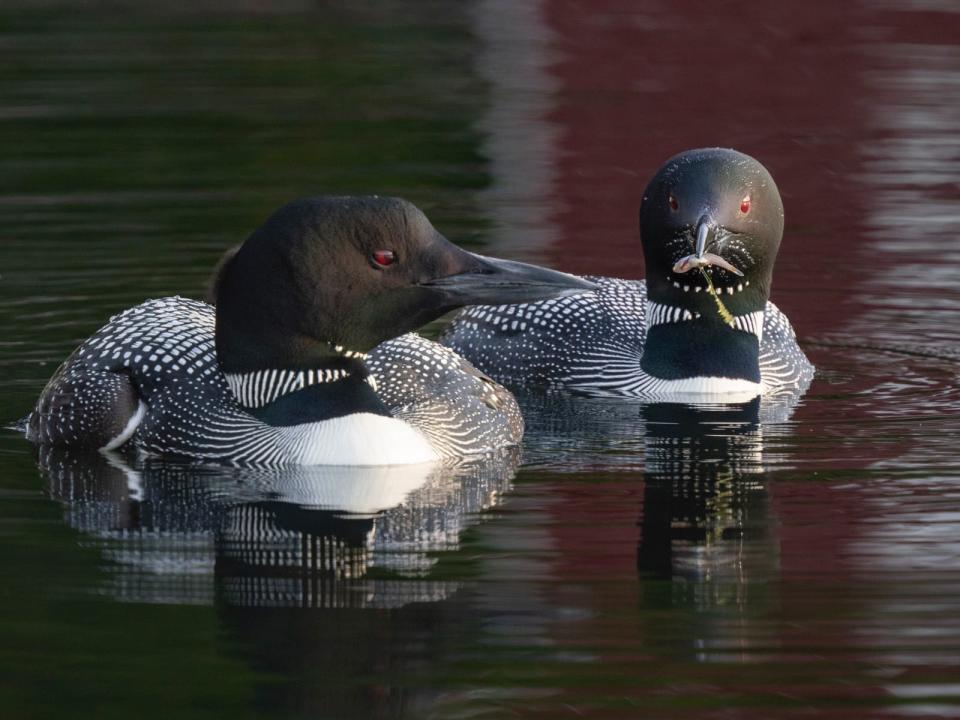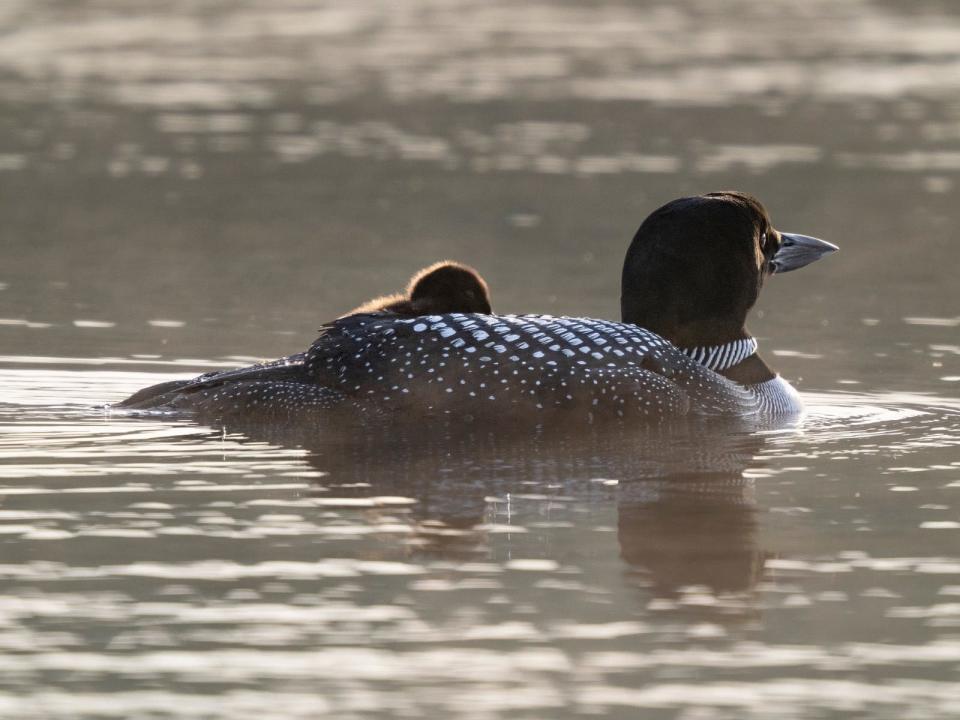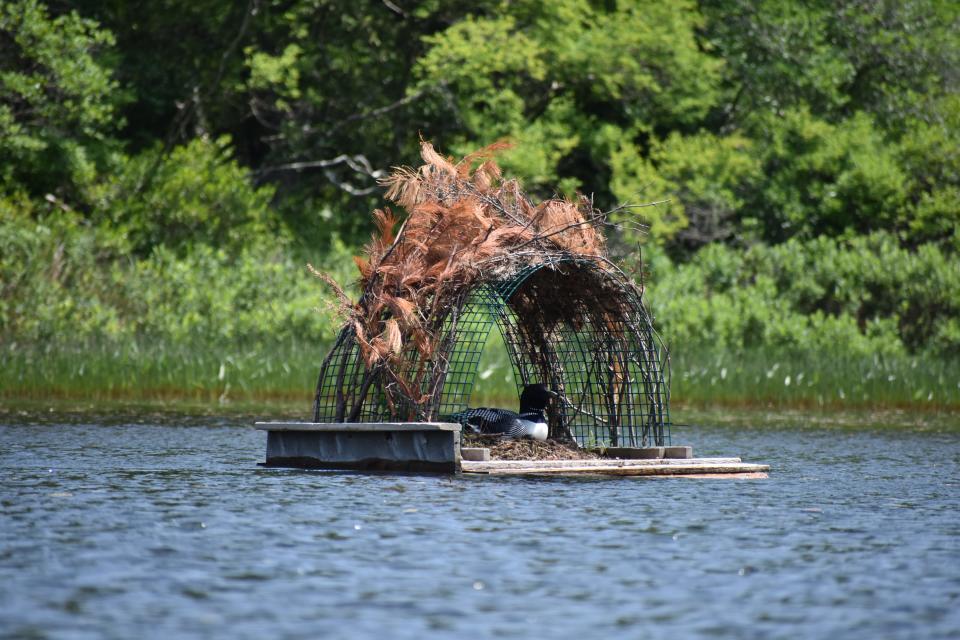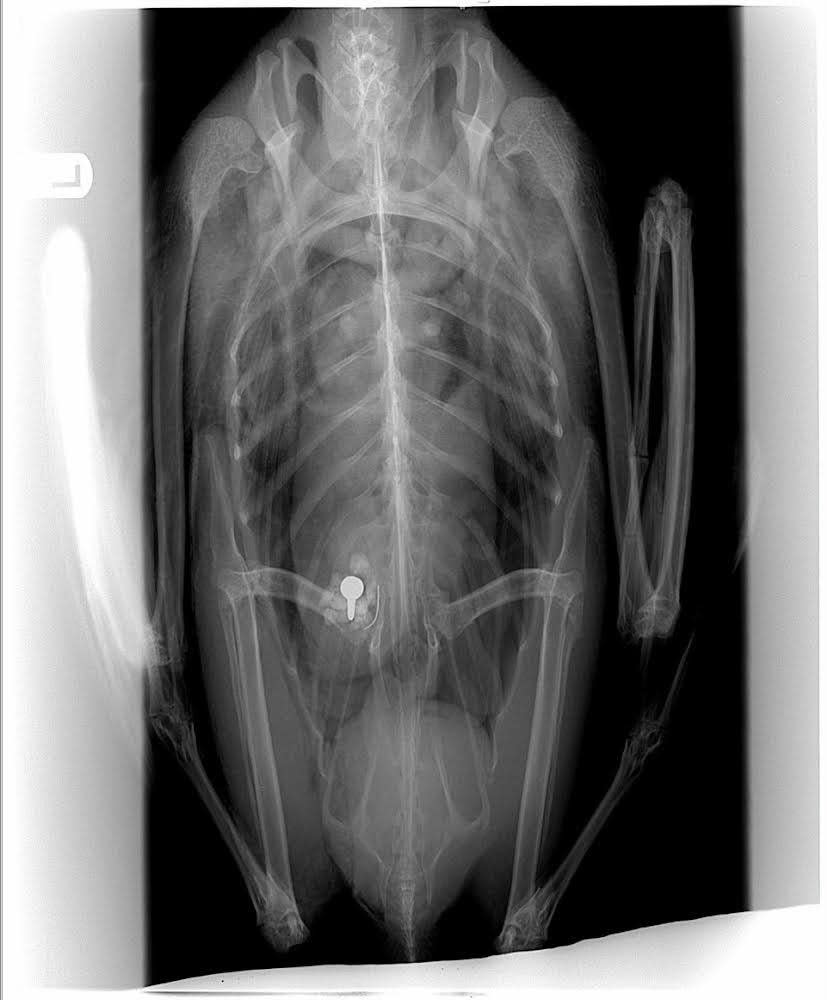Ways you can save the loons: That's the message at Center for Wildlife's open house
I always jump at the chance to go to any of the programs offered by the Center for Wildlife (thecenterforwildlife.org) in Cape Neddick, Maine. There are many reasons. Proximity to the great trails at Mt. Agamenticus. Lots of cool ambassador animals. This is a wildlife rehabilitation facility. Animals that cannot be released back into the wild are incorporated into education and outreach programs.
But the most compelling reason is the wealth of information housed in the people who work, volunteer and visit there. This past Sunday was a CFW Open House, an event that featured loon conservation. I thought I already knew a lot about loons. They are such a charismatic, relatively common, local bird that most of us feel like we are experts. However, I did not fully realize the huge amount of research and work that is going into protecting the common loon, nor was I aware of the many opportunities for us to help.

Mark Pokras, a professor from the Tufts Veterinary School, introduced his research (and his students who also presented their research) and set the stage by reminding us of what impressive birds loons are. Their haunting calls epitomize lake life in New England. You can’t go into a New England gift shop and not find something emblazoned with a loon (I own two loon mugs and at least three loon T-shirts and sweatshirts).
Of all of the northeastern states, Maine has the most loons (just over 4,000 adults), surpassed only by Minnesota (more than 10,000 adults) in the U.S. These populations, however, are dwarfed by the numbers of common loons in Canada where 80% of all common loons spend time.
Loons are perhaps one of the most aquatic birds on the planet. The chicks jump into the water within a day of hatching and don’t return to land until they are old enough to breed, generally six to seven years old. Very little time is spent on land. Their legs are placed so far back on their bodies that they have to move by pushing themselves along the ground.
While not great for land, those legs are in the perfect position to propel loons through the water. Unlike penguins and puffins, loons don’t fly through the water, they kick with their feet. These are birds supremely adapted to their environment.
Pokras’ particular research area involves why loons die. The results that Pokras and his students shared with us were both interesting and alarming. I think we all know that lead (ingestion of lead fishing tackle) is one of the leading causes of loon mortality, but boat collisions are starting to creep up there for top honors. And the waves generated by wake boats is having major impacts on loon nesting. The wake generated by these boats (any boat really) can swamp nests, even knock eggs and chicks out of nests. In addition, there are new diseases.
Avian malaria a new threat to loons
Avian malaria is being detected in biopsies of loon tissue. Avian malaria is more common in southern populations, which have adapted to carrying low levels of the parasite (luckily avian malaria is different from the parasite that causes human malaria). However, our northern loons are not so well adapted. Avian malaria was not present in loons 34 years ago when Pokras’ lab started studying loons. The first known infections of New England loons were as recent as 2010, with the first known death in 2015. The cause? As the climate warms, an increasing number of mosquito-borne diseases are moving into our area along with the mosquitos. The take home message from the loon mortality studies: The majority of loon mortalities are the result of human behavior, behavior that we can change.

The next set of speakers represented some of the local agencies working to conserve our loons: Susan Gallo (Maine Lakes), Tracy Hart (Maine Audubon) and Danielle D’Auria (Maine Inland Fish and Wildlife). The focus here was on what we can do to help. One easy one: If you live near a lake and know what a loon looks and sounds like, participate in a loon count. Maine’s annual loon count takes place in July. Participants go out for 30 minutes and count loons. That’s it! Fourteen hundred people participated this past year in collecting loon data that helps inform conservation. If interested, contact Maine Audubon (conserve@maineaudubon.org).

The Maine Loon Restoration Project is a partnership among a variety of agencies with the goals of increasing productivity (how many chicks survive) and decreasing mortality. The three major components of this program are placing loon nesting rafts, outreach through the loon rangers program to help protect and educate about local loons, and the Fish Lead-Free Initiative. Loon nesting rafts are a possibility for loon pairs successfully raising fewer than one chick every three years. If you know of loons having trouble raising young, contact the Maine Loon Restoration Project (maineaudubon.org/projects/loons/loon-restoration-project/) in Maine or the Loon Preservation Committee (loon.org) in New Hampshire to see about the possibility of nesting rafts.

Lead-free tackle vital to loon safety
The goal of the Fish Lead-Free Initiative is to increase the use of lead-free tackle on lakes and ponds throughout the region. Maine has a law that prohibits the use of unpainted (bare) lead tackle. This probably doesn’t solve the problem. One of Pokras’ graduate students has been researching whether painting lead tackle actually protects the loon from the lead that leaches into the stomachs of loons who have ingested the tackle. Loons eat a lot of crayfish, lobsters and crabs, and so have stomachs designed to deal with all that hard shell. They have extremely acidic stomachs and tough gizzards. Loons store small rocks in their muscular gizzards to help with grinding up food. This study showed that tackle paint was degraded within a few days, gone within a week as a result of all that acid and all that grinding. In fact, no painted tackle has ever been taken out of a dead loon’s stomach … compelling reasons to ban lead tackle small enough to be ingested by loons completely (as New Hampshire already has). The Fish Lead-Free initiative makes it easy to swap out your lead-based tackle through tackle exchanges, tackle buy-backs and collection bins at popular fishing spots.
Gallo, executive director of Maine Lakes, left us with this compelling thought “Loons face many, many small threats to their ability to raise young in Maine’s lakes and ponds. Any of these threats in isolation wouldn’t be a problem, but when they are combined or come one after the other in rapid succession, the threats seem to multiply in extent and impact. When you think about how little we need to change our behavior to reduce those risks ... slow our boats down close to shore, use lead-free tackle, watch loons from a distance, clean, drain, dry our boats … it seems like an easy choice to help loons do better in New England’s waters.”

Susan Pike, a researcher and an environmental sciences and biology teacher at Dover High School, welcomes your ideas for future column topics. Send your photos and observations to spike3116@gmail.com. Read more of her Nature News columns online at Seacoastonline.com and pikes-hikes.com, and follow her on Instagram @pikeshikes.
This article originally appeared on Portsmouth Herald: The Center for Wildlife in Cape Neddick, Maine holds open house

